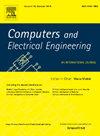Time–Frequency Domain Joint Noise Reduction Multi-Resolution Power System Time Series Prediction Network
IF 4
3区 计算机科学
Q1 COMPUTER SCIENCE, HARDWARE & ARCHITECTURE
引用次数: 0
Abstract
This paper proposes an innovative time series prediction method designed for power systems to overcome the shortcomings of existing deep learning techniques in complex noise environments. The method, called Time–Frequency Domain Joint Noise Reduction Multi-Resolution Power System Time Series Prediction Network (TDRSE), investigates the impact of noise on prediction results and proposes a complete solution. TDRSE consists of two key components Exponential Decay-based Denoising Network (EDnet) and Dynamic Frequency-Domain Signal Enhancement Network (FDse). EDnet achieves dynamic attention to different time points in the time dimension by introducing exponential decay units to cope with the volatility of power loads and noise disturbances. At the same time, FDse employs frequency-domain enhancement techniques and adaptive thresholding strategies to remove the noise components in the frequency domain, thus further improving the model’s power data prediction accuracy. The experimental results show that TDRSE performs well on real data sets of multiple power systems, significantly improves the prediction accuracy under complex noise conditions, and reaches the industry-leading level.

时频域联合降噪多分辨率电力系统时间序列预测网络
本文提出了一种创新的电力系统时间序列预测方法,克服了现有深度学习技术在复杂噪声环境下的不足。该方法称为时频域联合降噪多分辨率电力系统时间序列预测网络(TDRSE),研究了噪声对预测结果的影响,并提出了完整的解决方案。TDRSE由指数衰减去噪网络(EDnet)和动态频域信号增强网络(FDse)两部分组成。EDnet通过引入指数衰减单元来应对电力负荷的波动性和噪声干扰,在时间维度上实现对不同时间点的动态关注。同时,FDse采用频域增强技术和自适应阈值策略去除频域中的噪声成分,进一步提高了模型的功率数据预测精度。实验结果表明,TDRSE在多个电力系统的真实数据集上表现良好,显著提高了复杂噪声条件下的预测精度,达到行业领先水平。
本文章由计算机程序翻译,如有差异,请以英文原文为准。
求助全文
约1分钟内获得全文
求助全文
来源期刊

Computers & Electrical Engineering
工程技术-工程:电子与电气
CiteScore
9.20
自引率
7.00%
发文量
661
审稿时长
47 days
期刊介绍:
The impact of computers has nowhere been more revolutionary than in electrical engineering. The design, analysis, and operation of electrical and electronic systems are now dominated by computers, a transformation that has been motivated by the natural ease of interface between computers and electrical systems, and the promise of spectacular improvements in speed and efficiency.
Published since 1973, Computers & Electrical Engineering provides rapid publication of topical research into the integration of computer technology and computational techniques with electrical and electronic systems. The journal publishes papers featuring novel implementations of computers and computational techniques in areas like signal and image processing, high-performance computing, parallel processing, and communications. Special attention will be paid to papers describing innovative architectures, algorithms, and software tools.
 求助内容:
求助内容: 应助结果提醒方式:
应助结果提醒方式:


